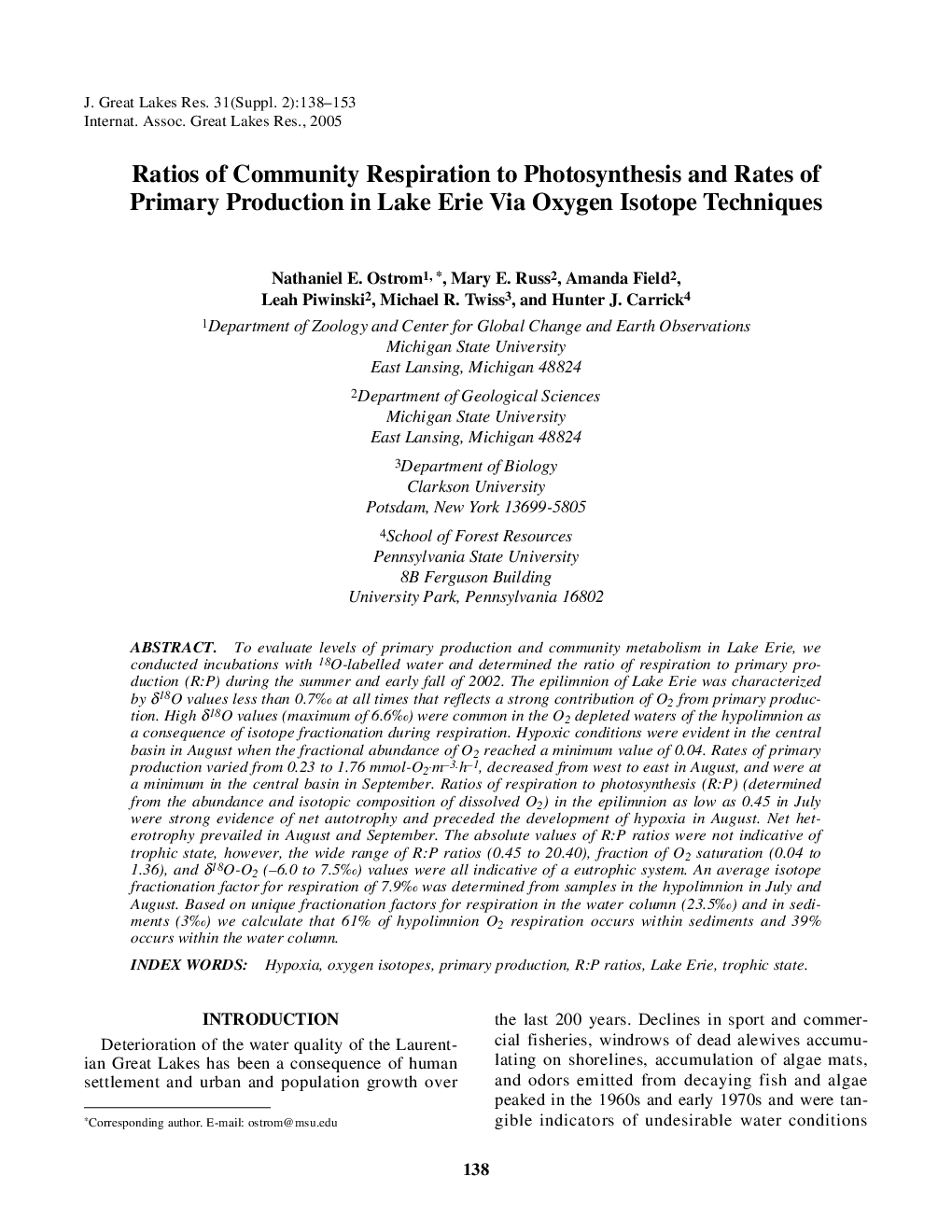| Article ID | Journal | Published Year | Pages | File Type |
|---|---|---|---|---|
| 9450245 | Journal of Great Lakes Research | 2005 | 16 Pages |
Abstract
To evaluate levels of primary production and community metabolism in Lake Erie, we conducted incubations with 18O-labelled water and determined the ratio of respiration to primary production (R:P) during the summer and early fall of 2002. The epilimnion of Lake Erie was characterized by δ18O values less than 0.7â° at all times that reflects a strong contribution of O2 from primary production. High δ18O values (maximum of 6.6â°) were common in the O2 depleted waters of the hypolimnion as a consequence of isotope fractionation during respiration. Hypoxic conditions were evident in the central basin in August when the fractional abundance of O2 reached a minimum value of 0.04. Rates of primary production varied from 0.23 to 1.76 mmol-O2.m-3.h-1, decreased from west to east in August, and were at a minimum in the central basin in September. Ratios of respiration to photosynthesis (R:P) (determined from the abundance and isotopic composition of dissolved O2) in the epilimnion as low as 0.45 in July were strong evidence of net autotrophy and preceded the development of hypoxia in August. Net heterotrophy prevailed in August and September. The absolute values of R:P ratios were not indicative of trophic state, however, the wide range of R:P ratios (0.45 to 20.40), fraction of O2 saturation (0.04 to 1.36), and δ18O-O2 (â6.0 to 7.5â°) values were all indicative of a eutrophic system. An average isotope fractionation factor for respiration of 7.9â° was determined from samples in the hypolimnion in July and August. Based on unique fractionation factors for respiration in the water column (23.5â°) and in sediments (3â°) we calculate that 61% of hypolimnion O2 respiration occurs within sediments and 39% occurs within the water column.
Related Topics
Physical Sciences and Engineering
Earth and Planetary Sciences
Earth and Planetary Sciences (General)
Authors
Nathaniel E. Ostrom, Mary E. Russ, Amanda Field, Leah Piwinski, Michael R. Twiss, Hunter J. Carrick,
